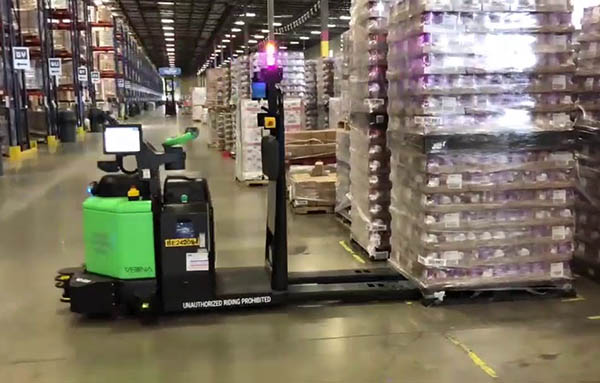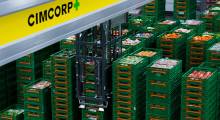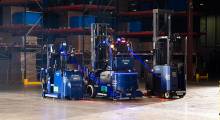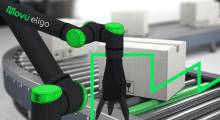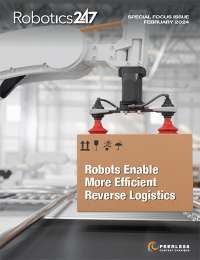Warehouses and distribution centers will soon be in the rush of the holiday season, working long hours to fulfill orders. While e-commerce sales aren’t at the all-time highs they were at last year and throughout 2020, the market still demands strong, flexible, and resilient operations to meet peak demand.
Robots can help answer the call in response to labor shortages and as the underlying technologies powering these autonomous systems continue to improve. Last month, the International Federation of Robotics (IFR) reported that more than half a million robots were sold globally last year.
Autonomous mobile robots (AMRs) are being used for a variety of tasks, and suppliers say they see an increased interest in more flexible systems that can carry higher payloads and adapt to changing workflows.
Recession worries loom over industry
OTTO Motors CEO Matthew Rendall told Robotics 24/7 that he is interested to see how this holiday season plays out. There are a lot of different variables at play, he noted, from the state of the pandemic to supply chain concerns.
“This really is the first post-COVID holiday season, so it’ll be revealing to see what actually happens,” Rendall said. “There are a lot of differing opinions out there whether we are going to see a blockbuster holiday season, because people feel confident that that the pandemic is in the rearview mirror. Or maybe they’ll be a bit of a whipsaw because manufacturers have been experiencing a tremendous amount of supply chain pressure.”
Those same manufacturers have been stocking up on inventory to prepare themselves, he noted.
But with rising interest rates and the threat of a recession on the horizon, Rendall said “demand could soften, and you’ll see a glut of inventory as supply chains become normalized.”
Flexibility a high priority
From now on, customers are going to demand materials handling systems that offer supply chain flexibility, noted Rendall.
“If there is one thing I think that people can easily agree on, in spite of all the different opinions, is that the world is unpredictable,” he said. “Therefore, having automation that is flexible to that uncertainty and that high degree of change will prove itself as one of the single biggest drivers of a return on investment.”
“Because if you don’t have that flexibility, when something comes out of left field, your automation will not be able to respond to it,” Rendall added.
OTTO Motors extends AMR life via software updates
OTTO Motors views its robots as “software-enabled pieces of hardware,” Rendall said. The Kitchener, Ontario-based company equips its AMRs with more powerful hardware components then they currently need to accommodate future software updates in the years to come.
“We believe over the life of an asset, you should be able to receive software updates, and the value of your assets increase over time as your software becomes powerful, more capable, and more feature-rich,” asserted Rendall. “That’s a very different way of thinking about an automation investment because traditional capital equipment thinking is – purchase the asset up front, and it becomes less performant and less valuable over the wear and tear and the lifetime of that asset.”
Earlier this year, OTTO Motors launched its OTTO Lifter, an autonomous forklift with a payload capacity of 1,200 kg (2,640 lb.). The new robot has been “doing tremendously well” and has exceeded expectations, said Rendall.
“We’re seeing a healthy demand for truly autonomous forklifts,” he said.
Vecna robots handle mixed cases
Vecna Robotics is wrapping up deployments of systems for its customers in anticipation of the holiday season, said Matt Cherewka, director of strategy at the Waltham, Mass.-based company.
Vecna’s customers mostly work in upstream distribution centers, he said.
“We see our volumes going up because those facilities are supplying both replenishment of all those stores getting ready for the Thanksgiving and Christmas rush, but also a lot of the retailers that we work with have implemented a really solid omnichannel strategy,” he said.
“A lot of their e-commerce volumes actually get fulfilled out the stores, or they get shipped from the stores for the last-mile perspective instead of coming out of like an Amazon mega fulfillment center,” Cherewka added.
He acknowledged that e-commerce volumes are down a bit compared with last year and 2020, but volumes remain high overall.
“I think one of the 3PL [third-party logistics] sites we're at, their peak volumes goes up 6x around this time of the year, so it is still as crazy as ever, maybe not just as crazy as last year,” said Cherewka.
Autonomous forklifts grow in popularity
Like OTTO Motors, Vecna’s counterbalanced forklift has been very popular. It has become the company’s most popular lift truck, Cherewka said.
“We just announced an upgrade for that,” he said. “Part of the upgrade for that was driven by the amount of packaging workflows that we’re running into.”
As a result of the holiday rush, facilities are seeing more frequent shipments of mixed orders. That creates complexity, observed Cherewka.
“So the final leg of that: 'How do I do get all these orders consolidated and wrapped together and out to trucks?' That’s where we’ve done a lot of work recently.”
Vecna’s robots and vehicles have also been useful in helping facilities move around special product displays and stands for the holiday season, Cherewka said.
“There are a lot of warehouses that get those shipments in the summer, so they have to pull them all out of the back corner of the warehouse and create these giant assembly lines of people to build these displays and then ship them to all the stores they need to go to,” he said. “That’s a lot of back and forth, and so we do a lot of workflows around that.”
Holiday season is coming sooner, says Locus
The holiday season continues to start earlier and earlier, commented Kary Zate, senior director of marketing communications at Locus Robotics in Wilmington, Mass. Companies used to start gearing up right after Halloween. These days, they are preparing much sooner than that, he said.
Finding workers continues to be a real challenge, so robots are being bought in to compensate during the holiday rush, Zate added.
“At this time of year, a lot of our customers order additional robots as part of their contract to add into their staff,” he said. “So instead of finding human labor, they’re just adding more robots and getting more productivity out of the existing labor force that they currently have.”
Like many robotics companies, Locus Robotics uses a robotics-as-a-service (RaaS) business model. That means companies can request more robots being brought in during a certain time of a year and return them once they are done. These autonomous systems are often called “surge robots” or “peak robots,” Zate said.
Despite slowing economy, online shopping drives automation
While e-commerce has slowed a bit, it will continue to greatly influence how supply chain operates, said Zate. That theory is helped by the fact that during the pandemic, more industries began offering their products online, he added.
“I don’t think we are going to see a complete return where the vast majority are going to be in-store and online is going to take a back seat” Zate said. “I think online is going to still hold a very significant portion of that equation.”
Customers are used to the convenience of ordering their groceries, meals, and more online, he said.
“Industrial companies, business-to-business companies, and others are now seeing the advantage of being able to provide online catalogs for their customers where they don’t have to have somebody coming in the store,” said Zate.
About the Author
Follow Robotics 24/7 on Linkedin
Article topics
Email Sign Up

